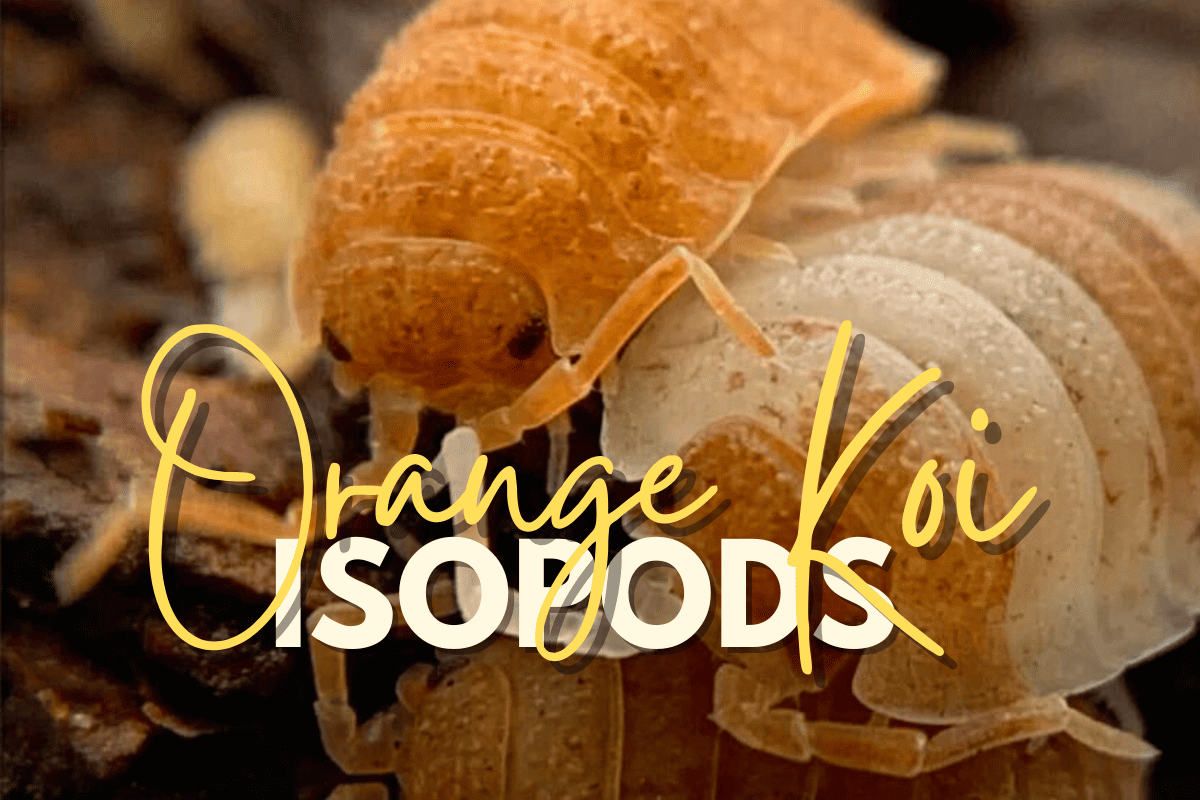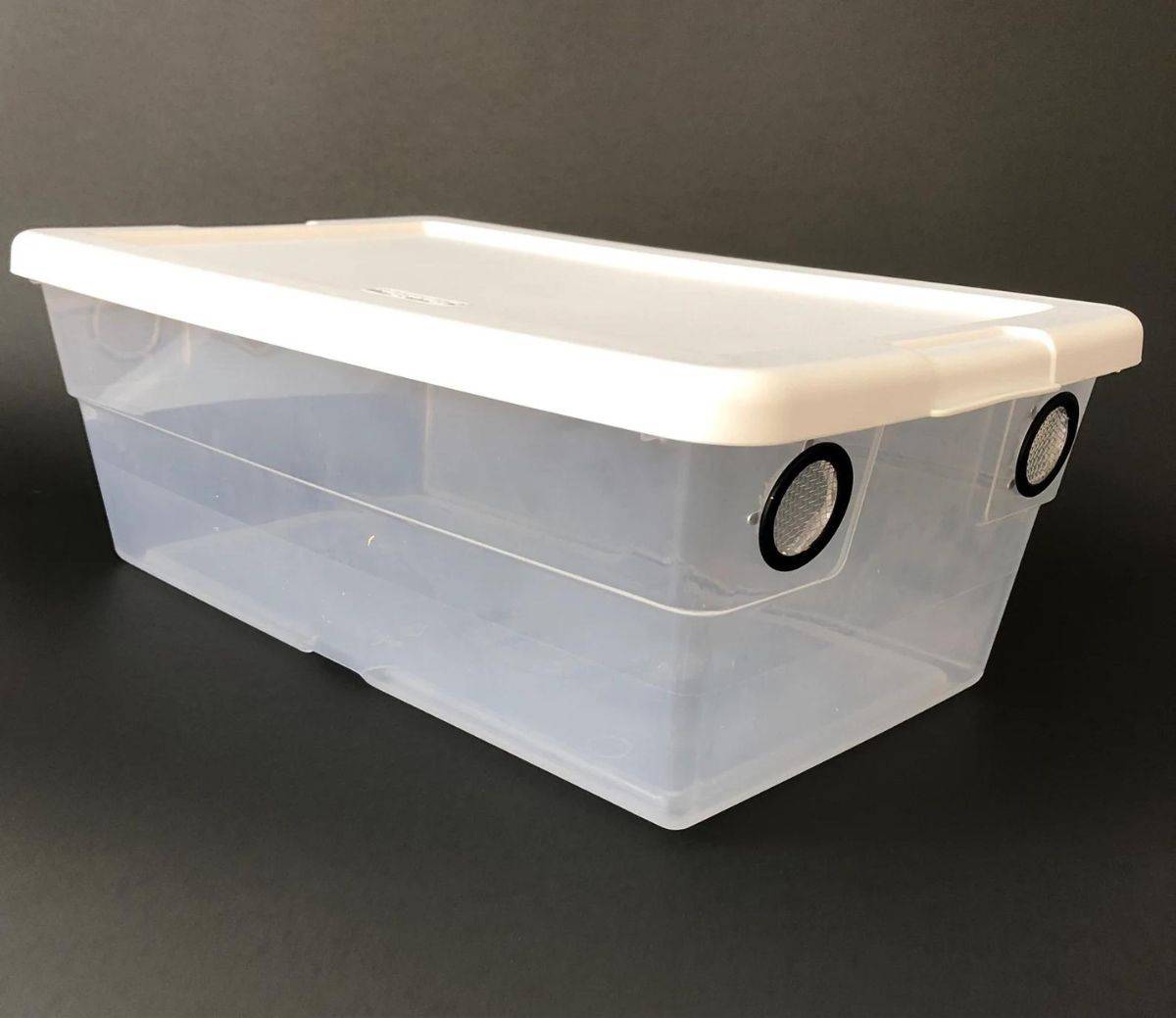Porcellio scaber ‘Orange Koi’ is a zesty isopod morph.
Yes, I’m biased (orange is my favorite color), but I just love these bold beauties. Each bears a mottled arrangement of white spots, just like the Koi fish they’re named after.
As one of the original isopod species in the hobby, this morph is from good stock.
So, whether you want a reliable bioactive cleanup partner or just an eye-catching new isopod pet, you can’t go wrong here!
In this guide, we’ll take a deep dive into the care requirements of Orange Koi Isopods and everything you need to know about using them in your next project.
Let’s not be koi, time to go!

Terrarium Tribe is reader-supported. When you purchase through links on our site, we may earn an affiliate commission (at no further cost to you). 💜
Porcellio scaber ‘Orange Koi’ Isopods – A Quick Primer
You could argue that Porcellio scaber is the original designer isopod.
After all, a lot of early work went into isolating interesting color morphs from this species, and the ‘Orange Koi’ is perhaps the best—the fortuitous result of a combination of two unique mutations.
Similar to the ‘Dalmatian Gene,’ the appropriately named ‘Koi Gene’ is a recessive trait that causes an overall white appearance with dark mottled patches. When paired with the ‘Orange Gene’ isolated from P. scaber, you get this wonderful isopod creation!
(We see the orange at play in the fan-favorite Powder Orange Isopods, too).
So yes, these isopods are not natural critters, but that doesn’t make them any less effective.
These are excellent bioactive custodians; they just happen to look good too! It’s no wonder they’re so popular in the worldwide isopod-keeping community.
Not to mention;
- These are highly adaptable isopods, able to handle a range of temperatures and humidity levels. Making them perfect for beginners.
- They’re a fairly average-sized isopod species at just under 2cm in size. So they’re a good fit for terrarium and vivarium setups of most sizes.
- They breed super easily, so they’re quick to establish.
👉 Sound good? Grab a culture of Orange Koi Isopods
Next up, let’s peel back the curtain on how to care for these orange wonders!
Essential Orange Koi Isopods Care
Ideal Habitat & Conditions
These adaptable critters will slot nicely into a typical isopod bin setup.
At their size, a normal shoebox-sized container (6 quarts?) is plenty to get started with. Inside, you’ll need a suitable isopod substrate mix, cork bark, and leaf litter.

For the substrate, you’ll want plenty of organic components like flake soil, orchid bark, and earthworm castings to make up the bulk of the mix. Then, add patches of sphagnum moss for your “wet areas,” as these isopods appreciate a moderate moisture gradient in a culture bin.
As always, it’s important to maintain a humidity level of 50% or higher for these isopods.
Though Porcellio does tend to like it on the dryer side, so you can afford to add plenty of ventilation to achieve a good balance.
All that said, their adaptable nature allows them to still do well in a tropical terrarium setup too.
In terms of environmental conditions, according to the experts at Rubber Ducky Isopods, these isopods do best between 70-84º F.
So that’s a nice, comfortable temperature range to work with, right?
Food
Orange Koi Isopods do have quite large appetites for a medium-sized species.
So you’ll need to provide plenty of leaf litter and organic matter for them to munch on. Decomposing softwood (e.g., cholla wood branches) are a great option too.

👉 Shop organic leaf litter on our store.
But it’s easy to supplement their diets, too – Porcellio isopods aren’t picky eaters…
In terms of organic matter, any vegetable scraps will be well-received. Just add a small bit at a time to keep any potential mold problems at bay.
Though, perhaps more importantly, these isopods appreciate a high protein diet and some added calcium for good measure.
What do I think is the easiest way to get both of these in one?
👉 Our isopod Superfood powder, of course!
Check out my full guide to isopod foods for more help.
Breeding
Honestly, there’s no special treatment required for breeding Orange Koi Isopods.
Though they have nothing on the Dwarf White or Purple Isopods, ‘Orange Koi’ isopods are still reasonably prolific breeders in their own right. Their “iteroparous reproductive strategy, which affords several broods within a year,” according to this 1997 study.
So, you can expect them to populate a new setup without much interference.
Keeping things on the warmer side of the temperature range can often help facilitate isopod breeding, but I doubt you’ll have any issues on this front.
Where to Buy Porcellio scaber ‘Orange Koi’
Being a color morph of one of the most popular isopod species on the market, Orange Koi Isopods aren’t exactly rare these days.
Though, it still pays to get your new critters from a reliable source.
That’s why we recommend our partners, Rubber Ducky Isopods. They go to great lengths to make sure your isopod culture arrives safe and healthy (and shipping is included in the price, so you always know what you’re paying!).
We don’t currently sell these isopods on our own store, but we’re adding new species all the time! Why not check out our current isopod species for sale?
Orange You Excited?
That’s it; I think we’ve squeezed all the juice out of this topic.
But there’s plenty more juicy orange/fruit isopod content to be found. Be sure to check out our guide to Powder Orange Isopods or our Peach Isopods deep dive.
